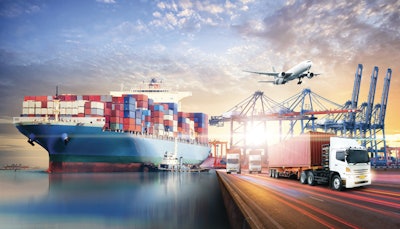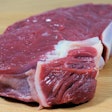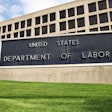
One of the biggest logistical challenges the United States is facing as a meat exporter is a lack of access to vessels that can ship the product out on a reliable basis. Those limitations are impeding the country’s ability to ship chilled products to key Asian markets.
Erin Borror, economist for the U.S. Meat Export Federation (USMEF) said the “logistic situation is critical” while speaking during the Ag Outlook Forum on September 26. The forum was hosted by Agri-Pulse and the Agricultural Business Council of Kansas City.
Borror said the United States has typically always had a major competitive advantage over other countries when it comes to shipping chilled meat to Asia, because of a shorter shipping time to the Asian markets.
But with the current logistical limitations, that advantage isn’t so strong anymore, she said.
“When your ships don’t go on time, that hurts,” Borror said. “And when your importer has to freeze that product, it costs them a lot of money, so we’ve seen the retail customers look for more frozen (meat) and that’s taken some premiums out.”
Impacts of African swine fever
Borror also spoke about the current pork market, focusing a lot of that attention on the continuing African swine fever (ASF) outbreak in other parts of the world.
The U.S. had been heavily exporting pork to China during the early stages of the outbreak, but that has since slowed down.
The U.S. has had more opportunities as a result of ASF cases in Haiti and the Dominican Republic, which Borror said “has been supporting some of our Western Hemisphere growth. She also pointed out that the Mexican market has “really offset the slowdown into China.”
However, the biggest opportunity for U.S. pork exports might be Europe.
She said Europe’s pork production is presently down 4%, with the European Commission predicting that it will actually be down 5% for the year. Production is down even more significantly in Germany, due to onerous regulations on pork producers and processors.
“Europe not only has ASF constraints, that is a big part of it, but they also have the regulatory burden, and that’s what’s driving a double-decrease in Germany’s production,” she said.

















